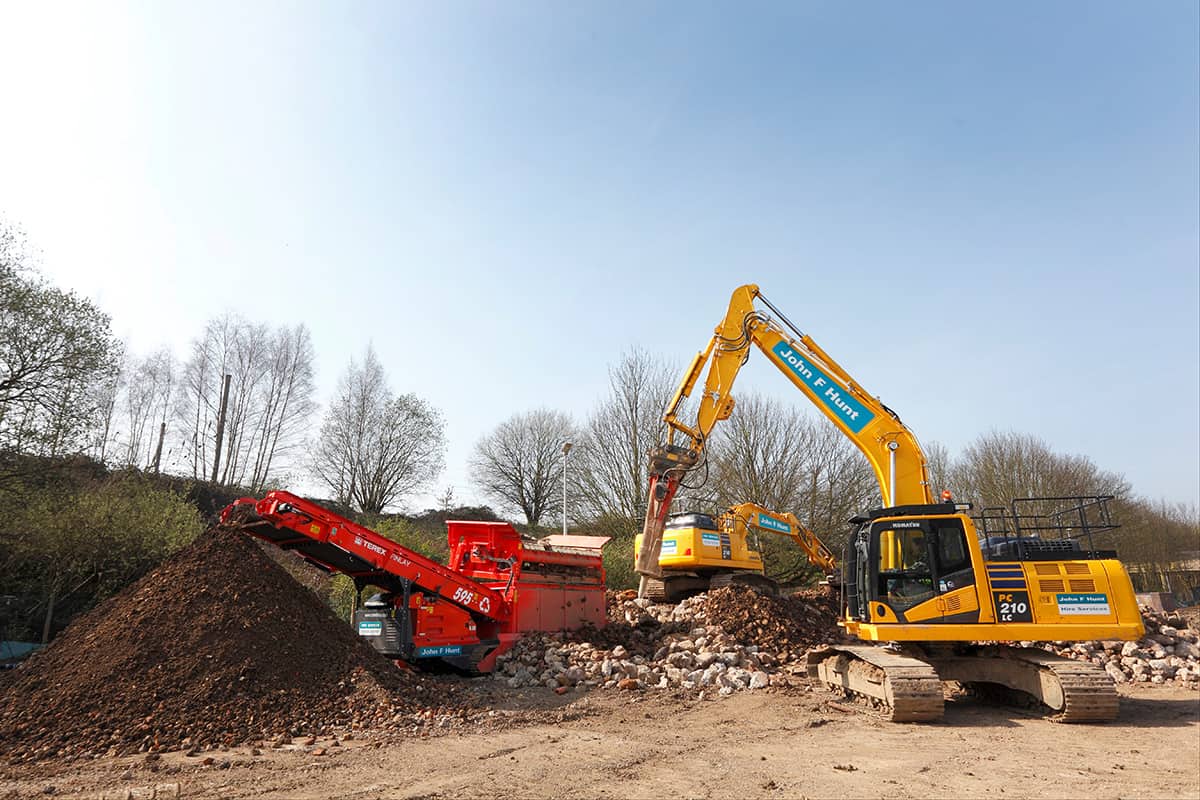Victoria Quarter
One Housing Group

30 months

£16.3m

Barnet
Location & Overview
John F Hunt undertook a contract for the remediation and civil engineering of the former Gasworks for One Housing Group, including the construction of a basement, 530m of contiguous piling and preparation of site infrastructure, including foul, surface water and gas mains.
Work, Challenges & Solutions
Remediation was required to remove grossly contaminated materials and asbestos from the soil to provide a verified clean 800mm layer for future development works. In developing the price and programme, we reviewed site investigation reports and undertook independent investigations to inform the design and value engineering options.
We devised a CL:AIRE Materials Management Plan (MMP) using forensic investigation, which enabled us to maximise the re-use of material and reduce the need for off-site disposal to local sites.
Our solution saved our client a significant cost of waste to landfill, mitigated risk and realised programme benefits.
Due to the site's location and the contamination severity, we implemented a rigorous monitoring plan which included VOC carbon tubes, PID and PM10 monitoring, in addition to background asbestos fibre monitoring to monitor noise, vibration, and airborne asbestos fibres.
Mitigation measures include odour suppression, plastic sheeting and a static jet washing system to ensure compliance with site safety standards and proactive management of risk as a considerate constructor.
The project involved the relining of a river running through site to prevent future contamination of connected water courses with a less invasive UV Lining to restore the integrity of the drain or sewer. Using this technology, we avoided the excavation and construction of a new culvert, improving surface water quality in Pymmes Brook.
We established and operated a controlled and carefully managed water treatment plant on site to collect and treat water prior to discharge into sewer, in accordance with the requirements and approval of Thames Water. The system was used to treat rainwater and recovered water from dewatering, excavation, and treatment activities and separate dense and light NAPL from the inflow by gravity in a NAPL separator whilst a secondary stage of activated carbon filtration removed the dissolved phase components prior to discharge. Treating the NAPL on site reduced the number of vehicle movements and cost of treating the water off-site.
It was necessary to divert several utilities including a major gas mains diversion through a busy parklands area and an existing water mains pipe. Careful consideration of Construction Logistics and Community Safety (CLOCS) was integral to the delivery of this phase of the project to ensure health and safety implications were managed and risks mitigated.
We also identified and removed invasive Japanese Knotweed from the western area of the site after conducting several surveys and segregating the area to safely undertake the works.
Our robust methodology meant that we completed infrastructure, mains diversions and surface water attenuation alongside remediation works, minimising programme implications. An innovative approach to the project scope and value engineering resulted in significant cost savings to our client as follows:
Our approach to relining the river improved the surface water quality and saved the client £0.5m on construction costs compared to traditional cut and cover technique.
We successfully promoted the case for increasing remediation targets for re-use of chrysotile fibre tainted soils, reducing waste.
Impounding water to facilitate solids and preliminary DNAPL settlement within a bunded excavation. Sand filter to mitigate tainting of carbon by solids and introduction of sparging to mitigate dissolved methane prior to discharge to sewer.
Preparation of stabilised pile mats using OPC geotechnically enhanced load bearing properties of recovered Class 2 materials. This solution avoided the off-site disposal of 10,000m3 of contaminated materials and replacement by recycled aggregates which would have significantly impacted the client’s budget.
Achievements
Successful Construction Logistics and Community Safety (CLOCS) management was pivotal to successfully undertake the scope of works and managing engagement with the local community.
Our innovative approach to improving surface water quality saved our client £0.5m in construction costs.
We maximised the re-use of material on-site by implementing a Materials Management plan, saving our client money by reducing waste to landfill.
By treating water in a sustainable approach on-site, we minimised lorry movements and our carbon footprint.
Construction of a 10,000 sqm basement for underground parking.
530m of contiguous piling.
Enabling works and preparation of site infrastructure, including road, drainage, foul water pipework, attenuation tanks and telecommunications.
Repairs and relining to a deep surface water culvert running 8 metres below the site.
Major gas main diversion.
Re-use of site-processed materials for capping layers.
Ecology.
Service installation and diversions.
Traffic management.
The construction of approximately 0.5km of adoptable highway.
Construction of a temporary road to maintain 24hr access for third parties.

